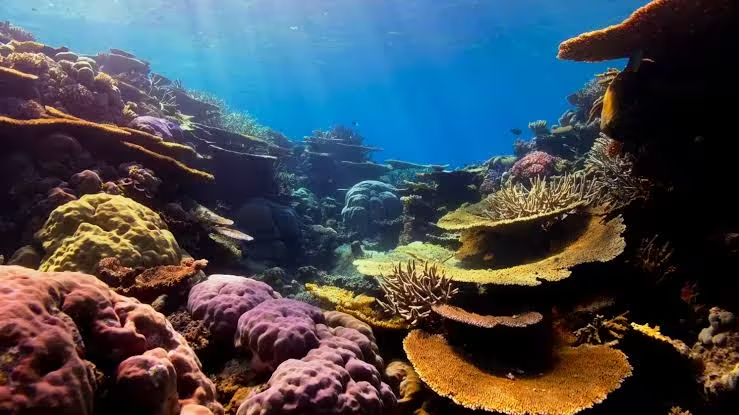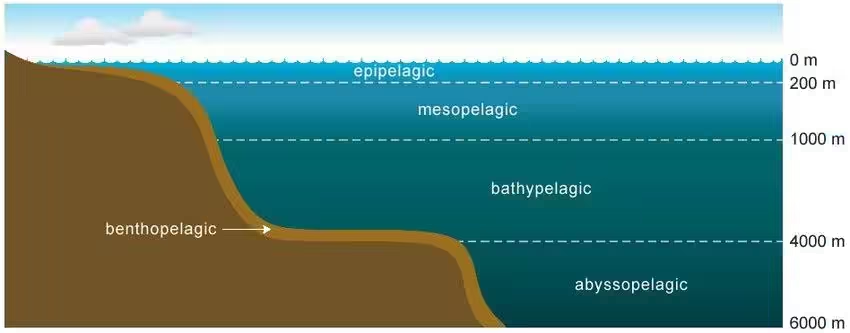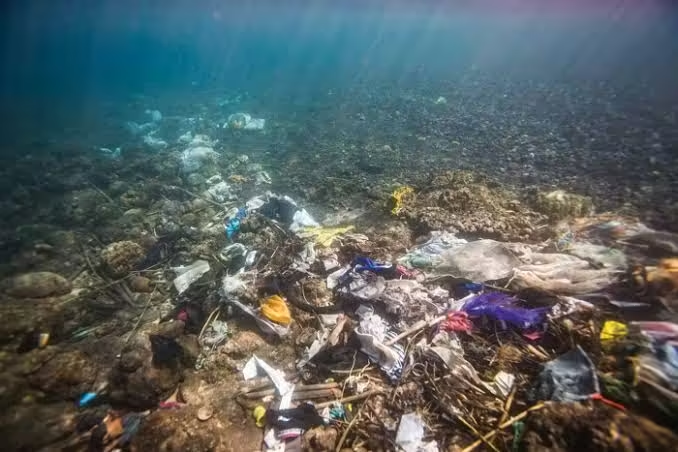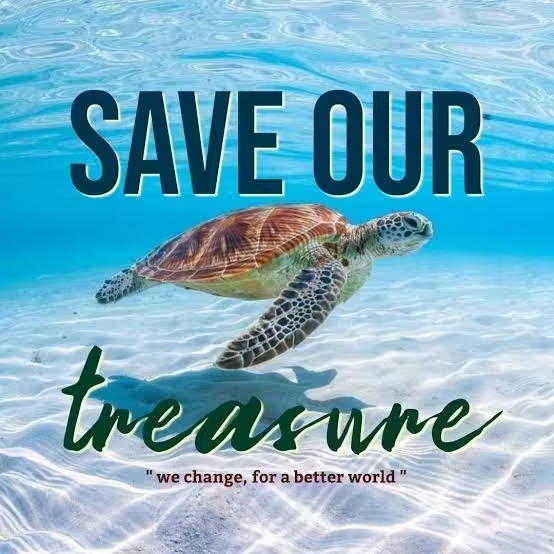The Ocean’s Hidden Treasures: Secrets of the Sea
Introduction: Mysteries Below the Surface, Secrets of the Ocean
The ocean is the vast and mysterious world spreading over 70% of the surface of our Earth and possessing 97% of all the planet’s water. Although being a part of our life, much of the sea remains unexplored, containing mysterious secrets in its depths. It holds marvellously interesting marine creatures. It keeps all the forgotten human history resting on the bottom of the sea. Is it the sea that draws us in, fills us with wonder, and stirs our curiosity? Let’s take a deep plunge into the ocean’s unknown treasures and unveil its many secrets.

The Depths of the Ocean: A World Unknown
Most people are familiar with the surface of the ocean, but the deeper you go, the environment becomes alien. The ocean comprises three portions having different layers, each unique in its way and home to unique creatures. These layers include the epipelagic zone or sunlit layer, mesopelagic zone or twilight zone, and abyssopelagic zone or abyss.

Epipelagic Zone: The Sunlit Surface
It is the region of epipelagic, also referred to as sunlight, which stretches from the surface down to a depth of approximately 200 meters. This zone contains most visible life in the ocean because of an adequate availability of sunlight. Such organisms include coral reefs, colorful fishes, and other marine mammals like dolphins and whales. Humans interact largely with this zone through fishing, boating, and tourism. Thousands of species of marine organisms find shelter and food in coral reefs, known as the “rainforests of the sea.”

Mesopelagic Zone: Twilight Realm
This zone is below the epipelagic zone. It is called the twilight zone, from about 200 to 1,000 meters deep, during which sunlight begins to fade. While it’s disappointing for life to appear sparse, it harbors many endemic animals such as lanternfish and squid that have evolved to survive in this dimly lit area. Bioluminescence is initiated as individuals in this zone can produce light within themselves. It helps others to give an attraction to mates or a method to attract prey for survival, creating an ethereal display of lights underwater.

The Abyssopelagic Zone: The World of Darkness
Descending deeper yet, we come to the abyssopelagic zone-the realm of eternal darkness. Temperatures plummet to stratospheric lows and pressures build but still, life is found here. Some deep-sea jellyfish live at an unbelievable depth; tube worms are dug out of hydrothermal vents and thrive on the chemical energy provided by circulating hot fluids rising from the core of our earth. Much of the abyss remains unexplored, making it one of the last frontiers for human discovery.
Marine Life: the Ocean’s Living Treasures
The ocean is alive, hosting more biodiversity than any other ecosystem on Earth. Marine organisms play a big role in regulating global systems-from carbon storage to oxygen production. In this respect, everything from the smallest plankton to the biggest whales can be regarded as living treasures.

Coral Reefs: Rainforests of the Sea
Coral reefs represent some of the planet’s most varied ecosystems. Although they cover less than 1% of the ocean floor, 25% of all marine species live there. Such an important ecosystem as a coral reef not only is beautiful with colorful formations and richness of marine life but also very important for maintaining the health of the ocean. However, these ecosystems, so vulnerable to climate change, pollution, and overfishing, face immense challenges that affect the whole ocean food chain.
Deep-Sea Creatures: Wonders of Adaptation
The most mysterious and the most remarkable creatures exist in the darkness of the ocean depths. Little light and extreme pressure prevail. They’ve evolved incredible adaptations for survival. The anglerfish has come to develop with a bioluminescent lure in which they attract their prey. The huge eyes in this dark water are necessary to enable the giant squid to navigate around. Studying them is no easy task, but advances in submersible technology have made it possible for scientists to explore and learn about these and other animals and shed new light on how life has learned to adapt.

Ships and Cities Lost to the Sea: Humanity and the Ocean
But history is not just found in the natural treasures of the ocean. The sea has swallowed up ships by the thousands, and civilizations whole, over the millennia.
The Titanic: The Ocean’s Most Famous Shipwreck
Among the known shipwrecks in history, probably one of the most famous is the sinking of the RMS Titanic in 1912 after it ran into an iceberg. The Titanic was discovered in 1985 and lies more than 12,000 feet underwater in the North Atlantic. Discoveries from the wreck have revealed a myriad of historical artifacts, almost like seeing windows to the past. Like so many other scientific discoveries, the Titanic stands as a haunting reminder of human vulnerability to the forces of nature.

The Lost City of Atlantis: Fact or Fiction?
One of the legends that over the course of centuries has fascinated explorers and scholars has been that of Atlantis. According to Plato, the Atlantic is said to have been a very powerful, advanced civilization which vanished beneath the waves many thousands of years ago. Where there is no proof of actual existence, yet some scientists and historians keep the search going because of the possibility that some great civilization once existed on land which is now underwater.

The Ocean’s Natural Resources: Gifts from the Sea
Though the sea is beautiful and biologically diverse, what is invaluable is also the resource wealth, living as well as inanimate. From minerals embedded within the seafloor to marine organisms which are important for medical research, the ocean’s ‘treasures’ abound.

Deep-Sea Mining: Treasure or Trouble?
While much promise has been attributed to deep-sea mining, it is at the same time one of the most contentious sources. Rich deposits of metals exist in underwater hydrothermal vents and manganese nodules on the ocean floor, an important source of copper, cobalt, and nickel, critical for renewable energy technologies; yet mining them may cause irreparable damage to fragile deep-sea ecosystems, making a delicate balance between resource extraction and environmental conservation one of the biggest challenges we face in managing ocean resources.
Marine Drugs
On the other hand, many chemical products originating from marine organisms have already proved valuable for drugs. For instance, on the basis of sea sponges, cancer drugs have been developed; several strains of bacteria that develop in the sea are under investigation as a new alternative to anti-elongative remedies. No doubt, in the vast ocean’s great pharmacy of unforeseen resources, lies a good prospect for future medical discoveries.

The Ocean and Climate Change: An Delicate Balance
The world’s ocean can absorb large amounts of carbon dioxide and heat that warm the planet. However, as climate change continues to be noted in the scientific community, it has started affecting the ocean, thus causing a threat to marine life and coastal communities.
Rising Sea Levels: Coastal Threats
The sea level is rising in exact synchronization with the rise in global temperatures. There are many reasons for this increase, including melting polar ice caps and glaciers and the thermal expansion of seawater as it warms. Rising sea levels threaten the coastline of cities and low-lying island nations-a threat that could displace millions of people over the coming decades. Flooding, erosion, and habitat loss are already becoming commonplace effects of climate change.

Ocean Acidification: The Silent Crisis
Yet, ocean acidification is another consequence of climate change. As for the fact that the ocean absorbs as much as one-quarter of the carbon dioxide released to the atmosphere, it reacts with seawater to create carbonic acid. This process lowers the pH of the ocean, and hence making it acidic. Acidification is devastating for marine life, especially organisms with calcium carbonate shells or skeletons, such as coral and shellfish. Ocean acidification could ruin the entire marine ecosystem and eventually imperil the food supply of hundreds of millions of people reliant on the ocean for sustenance unless checked.
Conservation Efforts: Save Our Ocean Treasures
Saving the ocean is indeed more urgent nowadays due to current ocean climate problems. From protected area creation to fishing practices, people from various parts of the world are trying to preserve it for future generations.
Marine Protected Areas: Safe Havens for Biodiversity
Marine Protected Areas (MPAs) are those sea areas in which human activities are controlled to ensure biodiversity. These areas give ecosystems time to restore and flourish while conserving threatened species and ensuring fish stocks continue to be exploitable. MPA’s have been highly successful in some parts of the world, though it is quite a tough job to enforce these protections in the wide open ocean with the help of the world.

Sustainable Fishing: Preserving Fish Stocks
Some of the major factors that threaten marine life are overfishing-the catching of species above recovery level. Sustainable fishing ensures replenishment of the pool stock numbers. This is achieved through catch limits, selective fishing practices, and marine certifications. Even the consumers play a part in responsibly choosing seafood harvested sustainably to end up on their tables, thus reducing the demand on high exploited species.

Conclusion: The Treasure of the Future in Our Ocean
The secrets in the ocean are no curiosities only meant for tourism, but essentials to our survival and well-being. From the wealth of life below the waves to natural resources supporting industries and medicine, the ocean is a critical part of Earth’s ecosystem. Threats, however, that face it can be sufficient to shake one’s foundation : from climate change and pressure on its exploitation. Good news: With scientific means, innovation, and conservation, treasures of ours can be preserved, and the ocean continues to thrive for generations to come.
FAQ’S
What is the depth of the ocean? Has it ever been explored?
The Mariana Trench is the ocean’s deepest region, reaching more than 36,000 feet. The submersibles have been explored by both manned and unmanned. The most famous was filmmaker James Cameron in 2012.
What are the effects of climate change on ocean biodiversity?
Ocean temperatures, sea levels, and pH level all get adversely affected by climate change, thus disrupting these marine ecosystems. Some effects are coral bleaching, habitat loss, and redistribution of species.
Why have coral reefs come to be referred to as the “rainforests of the sea”?
Coral reefs are considered the “rainforests of the sea” because it holds extremely high biodiversity and supports a wide variety of marine life, just like the rainforests support terrestrial species.
What is being done to preserve the diversity of the ocean?
Setting up Marine Protected Areas, practicing sustainable fishing, and other efforts are being done to protect ocean biodiversity and encourage overall health of marine ecosystems worldwide through international conservation initiatives.




